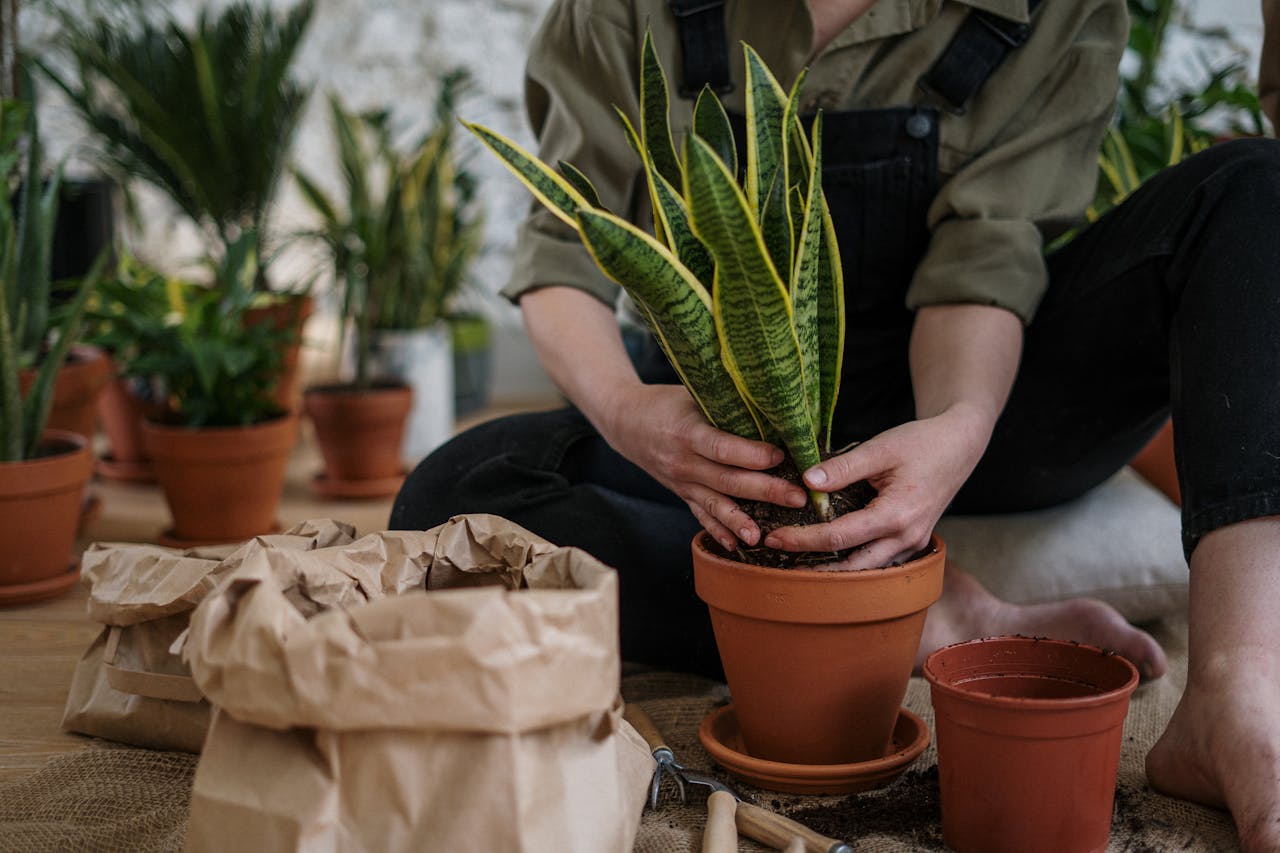Spider Plants (Chlorophytum comosum) are beloved for their lush, arching leaves and their ability to thrive in various indoor environments. Proper watering is essential to ensure your Spider Plant remains healthy and vibrant. In this comprehensive guide, we’ll explore how to water your Spider Plant properly, offering valuable tips for optimal growth.
Understanding Spider Plants Watering Needs

Before diving into the watering techniques, it’s important to understand the basic needs of Spider Plants. These resilient plants prefer moderate watering but are quite adaptable to different moisture levels. Striking the right balance is key to preventing common issues like root rot or dry, crispy leaves.
Key Points:
- Moderate Watering: Spider Plants prefer their soil to dry out slightly between waterings.
- Adaptability: They can tolerate both slightly dry and slightly moist conditions but thrive best with consistent care.
- Humidity: These plants enjoy moderate humidity levels but can adapt to typical household environments.
Also Read- Pruning Spider Plants: Tips For Maintaining A Beautiful Plant
Signs of Underwatering and Overwatering

Recognizing the signs of both underwatering and overwatering is crucial for maintaining a healthy Spider Plant.
Signs of Underwatering:
- Crispy, Brown Leaf Tips: The edges of the leaves may turn brown and crispy.
- Wilting Leaves: Leaves may droop and appear lifeless.
- Slow Growth: The plant may show reduced growth or stop producing new shoots.
Signs of Overwatering:
- Yellowing Leaves: Leaves may turn yellow, especially the lower ones.
- Mushy Roots: Roots may become soft and brown, indicating root rot.
- Fungal Growth: Presence of mold or fungi on the soil surface.
Also Read- Creating A Cozy Indoor Garden With Spider Plants This Winter
Best Practices for Watering Spider Plants

To ensure your Spider Plant receives the right amount of water, follow these best practices:
1. Check the Soil Moisture
Before watering, always check the soil’s moisture level. Insert your finger about an inch deep into the soil. If it feels dry, it’s time to water. If it’s still moist, wait a few more days.
2. Use Room Temperature Water
Spider Plants prefer water that is at room temperature. Cold water can shock the roots, while hot water may damage them. Allow tap water to sit out for a few hours to reach room temperature before use.
3. Water Thoroughly
When watering, ensure that you water the plant thoroughly until water drains out of the bottom of the pot. This ensures that all the roots receive adequate moisture. Avoid leaving the plant sitting in standing water, as this can lead to root rot.
4. Drainage is Key
Use pots with drainage holes to prevent excess water from accumulating. Good drainage helps maintain the right moisture level and prevents waterlogging.
5. Adjust Watering Frequency with Seasons
Spider Plants may require different watering frequencies depending on the season. During the growing season (spring and summer), they may need more frequent watering. In the dormant season (fall and winter), reduce the frequency as the plant’s growth slows down.
6. Mist for Humidity
While not a substitute for proper watering, misting your Spider Plant can help increase humidity, especially in dry indoor environments. This is beneficial for the plant’s overall health and leaf appearance.
Also Read- Spider Plants And Indoor Lighting: Ensuring Healthy Growth
Tips for Optimal Growth

Beyond proper watering, here are additional tips to ensure your Spider Plant thrives:
1. Use Well-Draining Soil
Opt for a high-quality, well-draining potting mix. A mix designed for houseplants or a combination of peat, perlite, and vermiculite works well for Spider Plants.
2. Provide Adequate Light
Spider Plants prefer bright, indirect light but can tolerate low-light conditions. Insufficient light can lead to slower growth and fewer spiderettes (baby plants).
3. Fertilize Regularly
Feed your Spider Plant with a balanced, water-soluble fertilizer every 4-6 weeks during the growing season. Avoid over-fertilizing, as this can lead to salt buildup in the soil.
4. Prune Dead or Damaged Leaves
Regularly remove any dead or yellowing leaves to encourage new growth and maintain the plant’s appearance.
5. Repot When Necessary
Spider Plants may outgrow their pots over time. Repotting every 1-2 years ensures that the roots have enough space to grow and access nutrients.
Also Read- Spider Plants And Temperature Fluctuations: Maintaining Optimal Growth
Common Mistakes to Avoid
To keep your Spider Plant healthy, avoid these common watering mistakes:
1. Overwatering
One of the most common mistakes is watering too frequently, leading to root rot. Always check the soil moisture before watering.
2. Inconsistent Watering
Spider Plants thrive on consistency. Try to establish a regular watering schedule based on the plant’s needs and environmental conditions.
3. Ignoring Drainage
Never let your Spider Plant sit in a saucer filled with water. Ensure excess water can escape through drainage holes.
4. Using Chlorinated Water
Chlorine in tap water can harm Spider Plants over time. Using filtered or rainwater can be a better alternative.
5. Neglecting Seasonal Changes
Adjust your watering routine according to the season. Overwatering in winter can be just as harmful as underwatering in summer.
Conclusion
Proper watering is fundamental to the health and growth of your Spider Plants. By understanding its moisture needs, recognizing the signs of overwatering and underwatering, and following best practices, you can ensure your Spider Plant remains a lush and vibrant addition to your indoor garden.













Leave a comment
This site is protected by hCaptcha and the hCaptcha Privacy Policy and Terms of Service apply.